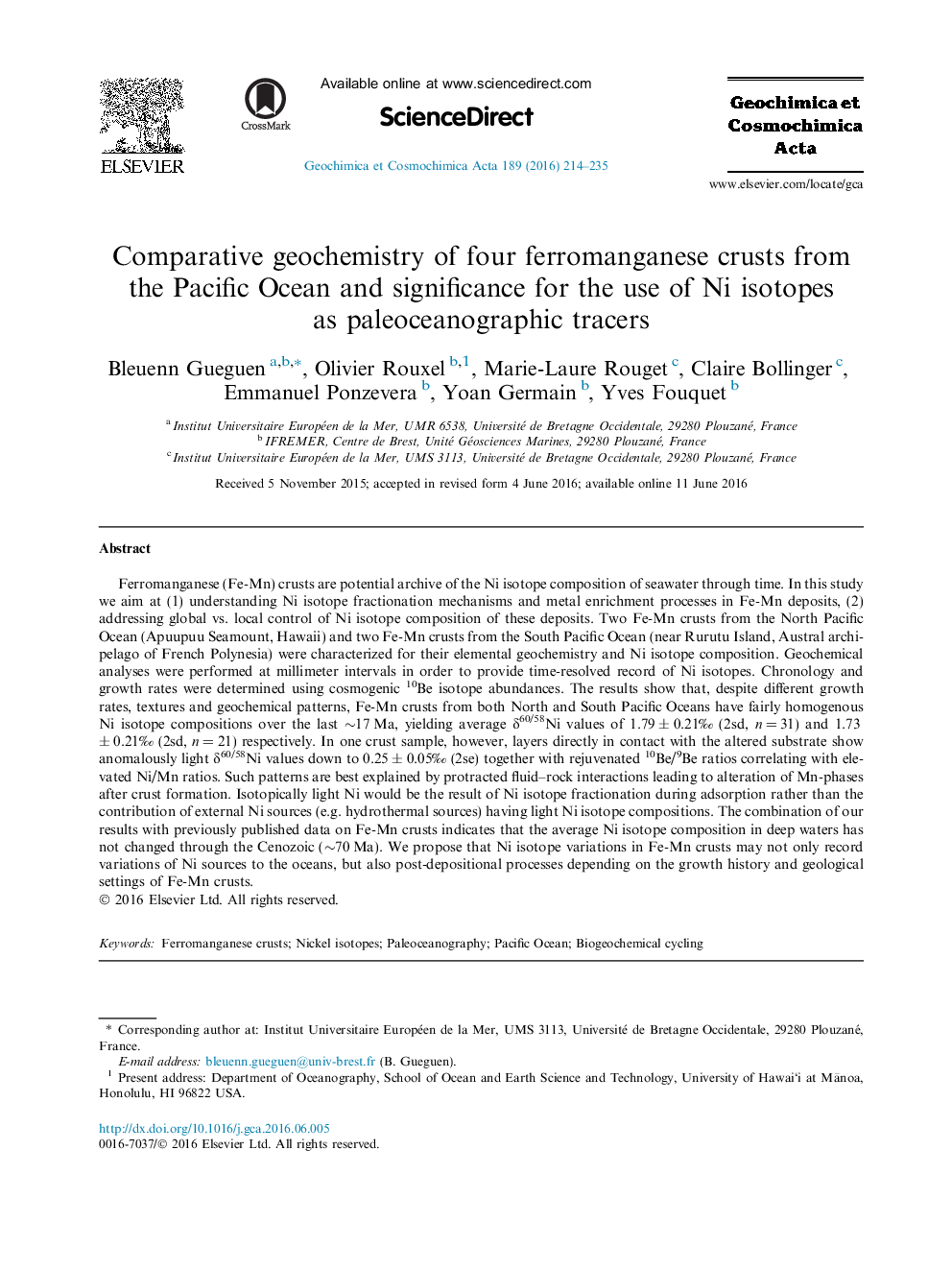| کد مقاله | کد نشریه | سال انتشار | مقاله انگلیسی | نسخه تمام متن |
|---|---|---|---|---|
| 6437254 | 1637968 | 2016 | 22 صفحه PDF | دانلود رایگان |
Ferromanganese (Fe-Mn) crusts are potential archive of the Ni isotope composition of seawater through time. In this study we aim at (1) understanding Ni isotope fractionation mechanisms and metal enrichment processes in Fe-Mn deposits, (2) addressing global vs. local control of Ni isotope composition of these deposits. Two Fe-Mn crusts from the North Pacific Ocean (Apuupuu Seamount, Hawaii) and two Fe-Mn crusts from the South Pacific Ocean (near Rurutu Island, Austral archipelago of French Polynesia) were characterized for their elemental geochemistry and Ni isotope composition. Geochemical analyses were performed at millimeter intervals in order to provide time-resolved record of Ni isotopes. Chronology and growth rates were determined using cosmogenic 10Be isotope abundances. The results show that, despite different growth rates, textures and geochemical patterns, Fe-Mn crusts from both North and South Pacific Oceans have fairly homogenous Ni isotope compositions over the last â¼17 Ma, yielding average δ60/58Ni values of 1.79 ± 0.21â° (2sd, n = 31) and 1.73 ± 0.21â° (2sd, n = 21) respectively. In one crust sample, however, layers directly in contact with the altered substrate show anomalously light δ60/58Ni values down to 0.25 ± 0.05â° (2se) together with rejuvenated 10Be/9Be ratios correlating with elevated Ni/Mn ratios. Such patterns are best explained by protracted fluid-rock interactions leading to alteration of Mn-phases after crust formation. Isotopically light Ni would be the result of Ni isotope fractionation during adsorption rather than the contribution of external Ni sources (e.g. hydrothermal sources) having light Ni isotope compositions. The combination of our results with previously published data on Fe-Mn crusts indicates that the average Ni isotope composition in deep waters has not changed through the Cenozoic (â¼70 Ma). We propose that Ni isotope variations in Fe-Mn crusts may not only record variations of Ni sources to the oceans, but also post-depositional processes depending on the growth history and geological settings of Fe-Mn crusts.
Journal: Geochimica et Cosmochimica Acta - Volume 189, 15 September 2016, Pages 214-235
